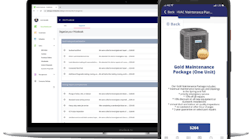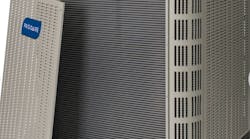My dad was an oil distributor; his background was similar to many distributors of the 1950s and '60s. Out of college, he worked as a sales rep for a large oil company; he got some industry experience, and at age 32, he bought his own business. He viewed benchmarking as his personal secret weapon. He took special care to network with other distributors across the country. He enjoyed the people and the lifelong friendships that came out of it, but benchmarking was the ultimate goal. But there was one drawback. He called it the “brag factor.” You could never take anything at complete face value. His benchmarking had a flaw.
When I joined the ranks of the distributor world, I followed a similar course. I networked, joined the right industry associations and developed a group of friends with whom I could compare notes. Then one day, I discovered the Profit Report. In one quick afternoon, I gained a whole new understanding of the real story of our industry — with the “brag factor” totally removed. For the next few moments, let's talk about the power of the HARDI Profit Report.
Benchmarking Against a Known Commodity
My dad and his generation fought the “brag factor” whenever they did benchmarking — one could never be totally certain of the validity of results. With the Profit Report, you have a known commodity — actually, multiple known commodities. First, you have the “typical distributor”; this is the guy right in the middle of the pack. Then you have the same numbers for those in the upper quartile — the guys who outperform 75 percent of their colleagues. I recommend you think about benchmarking against the best. If you are less than typical, you must consider radical changes. Other industries have found that many of the lowest-performing companies cannot weather the storm of turbulent times. These are the folks who will be absorbed by the better-run companies, or worse yet, they will simply liquidate when the present owner runs out of money.
Play the “what if” game. To do this, I recommend you build a spreadsheet around your own Profit Report numbers. Once you have built the spreadsheet, begin plugging in improvements to the process. In each case, use the numbers of the high-performing companies as a benchmark for your own company. Here is a list of “what if” questions:
- What if your gross margin were the same as the high-profit number? (page 7) [Editor's note: All page numbers in this article refer to HARDI 2008 Profit Report.]
- What if your collection period was equal to the high-profit guys? (page 12)
- What if your bad debt losses were equal? (page 11)
- What if you could generate other nongross margin income? (page 2)
- What if you could drive your operating costs to the same level as the high-profit companies? (page 7)
Go down the line for each and every item on the income statement and ask yourself is there any way to improve this number.
Build Profit Report-based measures into your financial dashboard. Many distributor management teams have developed financial dashboards that report their progress against a number of targets. Sales, Gross Margin Percentage, Collection Days, GMROI and a number of metrics are reported on a regular (at least monthly) basis. The management team sees their own numbers compared against the per-formance of high-profit firms each month and drives the business toward these goals.
Benchmarking on Steroids
Hopefully now you are seeing ways to benchmark your organization against the known numbers of the best in your industry. Now, let's move this benchmarking and networking thing to the next level. Go through your list of networking friends. Which of these friends take part in the Profit Report? It's the nature of distributors to try new and inventive things — that's the kind of people we are. And we love to share our success with our friends. The Profit Report allows us to actively measure the effectiveness of the new ideas.
In a networking session where both parties bring along their Profit Report data and compare activities, I can see the conversation going something like this:
First Manager: “You know, we changed up the way we run our sales territories a couple of years ago, and it has improved our Outside Sales compensation as a percentage of our Total Sales in a big way (page 7). Our salespeople have ramped up their sales volume at a rate which exceeds the ramp up of their salaries.”
Second Manager: “Our numbers are idling along at slightly higher than the typical numbers. Would you mind outlining your plan?”
Setting Intelligent Goals
In my 30-plus years of working in the channel, I have yet to meet a distributor president who started out as the credit manager. So how do we as company leaders set long- term, meaningful goals for the professionals who run these departments? Most trend toward activity-based things, discounts, returns, etc. But what happens if you set the goals based on meeting numbers that will drive your company closer to the numbers enjoyed by the high-profit companies in your business?
Here are some meaningful long-term goals for your operations-based team:
- Credit Manager — Bad Debt Loss, Average Collection Days
- Purchasing Manager — GMROI, Inventory Turns, AP Payout Period
- Sales Managers — Sales per Employee
One company I worked with was convinced their company was one of the leanest, meanest selling machines on the planet; at least until they saw their first Profit Report. It was an eye-opening experience for their whole team. Just like Roger Bannister's run changed the human perception of the four-minute mile, the Profit Report changed the way their management team perceived the distribution process. Once the management team saw evidence that others were producing more with less, their numbers took dramatic jumps over the next few years. Now they are performing close to the high-profit model and still finding ways to improve their process.
They hold two management meetings per year. Branch managers and all the department heads gather with the president and CFO the week following the release of Profit Report information. They spend a day reviewing their numbers, the trend lines in their numbers and the trend lines for high-profit distributors. At the end of the day, they set improvement goals built on the previous year's success. They also hold a second meeting midyear to test their theories against half-year numbers. Literally everyone in a leadership position is working to improve their Profit Report numbers.
Educating Your Vendors
One of the most often heard comments from wholesalers regardless of their line of trade is, “Vendors don't understand my business.” Truth is, you should modify this phrase to read, “The vendor's front line salespeople don't understand my business.” The Profit Report provides an educational background for sharing information on our industry. If you tell the new salesperson from your biggest vendor, “We need 23 percent margin just to break even,” he will assume one of two things: 1) you are not running your business properly or 2) you are lying to gain extra margin. But if you pull out the Profit Report, which shows the numbers for a “typical distributor,” you have credibility. If you take the time to explain the Profit Report data to the sales team of your top suppliers, you will begin to see results.
These are smart people, but chances are they have never had exposure to all the intricacies of the distribution model. I guarantee you that most believe your bottom-line profits are a greater percentage of the gross margin than they turn out to be in reality.
If you are a manufacturer reading this article, let me suggest a way to differentiate your team from the pack. I know of one leading manufacturer that brought their regional management team together to study the industry Profit Report. They spent a day reviewing the trends in the industry and learning as much as they could about the operation of their distributor partners. In the month following the meeting, these managers took their marked-up versions of the Profit Report to each of their distributor management teams. They brought creative ideas for improving the distributor's bottom line, achieving their own goals at the same time. This was a classic win-win deal.
At the Bank
Most of us have a banker partner off in the wings. And, in most cases, they know about as much about wholesale distribution as your vendor's sales team. I know of a couple of distributors who make it a standard practice to bring their Profit Report numbers into a meeting with their banker every year. They spend time talking about the industry, the trends in the industry and their own plans for moving forward in the next year. This 90-minute meeting builds a level of trust and confidence with the banker that grows with the years. So much so that one of these distributors reported back that their banker has asked them if a Profit Report-type report was available for other industries.
This information alone is well worth the price of admission, and to steal a phrase from my favorite TV pitchman, “But wait there's more — much more.” How about Activity-Based Costing?
Activity-Based Costing
I have always been a vocal advocate for distributors understanding their costs. Taken to completion, understanding costs allows distributors to understand which of their customers contribute to the bottom line and which do not. The Profit Report gives you a very good approximation of your true costs. For illustration, I have dissected the numbers for a “typical” HARDI distributor. I recommend you use your own numbers following this model. If you do not take part in the Profit Report process, you can still benefit by looking at the “typical” numbers.
In the box provided in Chart 1, I have provided several details regarding the typical distributor. In each case, I have provided the reference page from which the information was gathered. The intent here is to allow you to follow along and plug in your own numbers.
Here are some fast calculations that every distributor should run for their own business.
What is the cost of processing an order?
Remember what I said earlier, this is a very good approximation. It's not “dead on,” but if you lack a real process, it gives you a guideline. In this calculation, we are going to make a couple of assumptions:
- Inside sales and counter people are the ones most likely to enter orders.
- The credit department's time is equally spread over each order.
Based on this information, it costs the typical HARDI distributor $11.15 per order just to get it into their computer system. This does not include the costs associated with salespeople, warehousing, management, benefit plans or any of the hundreds of other costs.
If we add purchasing to the mix, we must assume that it is possible to evenly distribute your purchasing people's time over every order. This assumption is not 100 percent correct, but it does allow us to once again develop a better understanding of our business.
So based on this information, we know the first $12.50 (Chart 3) of the Gross Margin of each and every order, no matter how large or small, goes to paying inside sales, credit and purchasing people. But our costs don't end there. We need to understand the cost of the people associated with warehousing our products.
Chart 4 shows that we spend another $7.13 to warehouse each order that we generate.
We as wholesalers often find that our customers want us to deliver their orders. We absorb many of the issues associated with dealing with truck lines and freight companies. No freight company in the world will back their vehicle through deep mud to drop off a rush order — but we do. And there is a cost associated with this process.
In Chart 5, we find that the typical order costs us $2.94 to deliver. In my opinion, the real cost of delivery in the age of $50,000 trucks and $4.50 a gallon diesel is clearly three or four times the cost of the labor involved. But this gives you an excellent start.
Based on these calculations, we could surmise that the average order has $22.82 of labor costs built into it. Yet these costs do not include other major expense items. Remember, we are building rules of thumb here, but the message is clear. It takes nearly as long to enter an order for one single $100 item as it does to enter an order for a $1,000 item. Some of those “high margin” counter purchases that total $50 per order probably don't look all that sweet with this information considered. Before we go, let's look at one last cost associated with these orders — the building.
These are just rules of thumb, but we can draw some fairly good conclusions on many of our costs based on this short analysis. There is more. The more-detailed your own analysis, the better handle you can begin to devise in your analysis of your own business.
A Parting Thought
In the last few minutes, we have just touched on some of the ways you can use the Profit Report. Like all good business processes, to gain maximum benefit, we need to think about improving our Profit Report data all year long, and we need to constantly build on the way we use the numbers. Looking at it and stashing it in the credenza drawer won't get the kind of results we all need in this ever-changing world.
And finally, if you don't take part in the Profit Report process, you need to seriously consider it. HARDI has streamlined the time necessary to prepare the data, and the results back have never been better.
Frank Hurtte, founding partner of River Heights Consulting, speaks, coaches and writes on knowledge-based distribution. He is the author of the NAW Institute for Distribution Excellence book, The Distributor Specialist: Customer Champion, Profit Generator! and creator of the Sales Leadership Subscription. Contact him at 563/514-1104, [email protected] or visit www.riverheightsconsulting.com.
Benchmarking — A Definition:
To measure another's product, service or process according to a specific standard in order to compare it with and improve one's own results.





